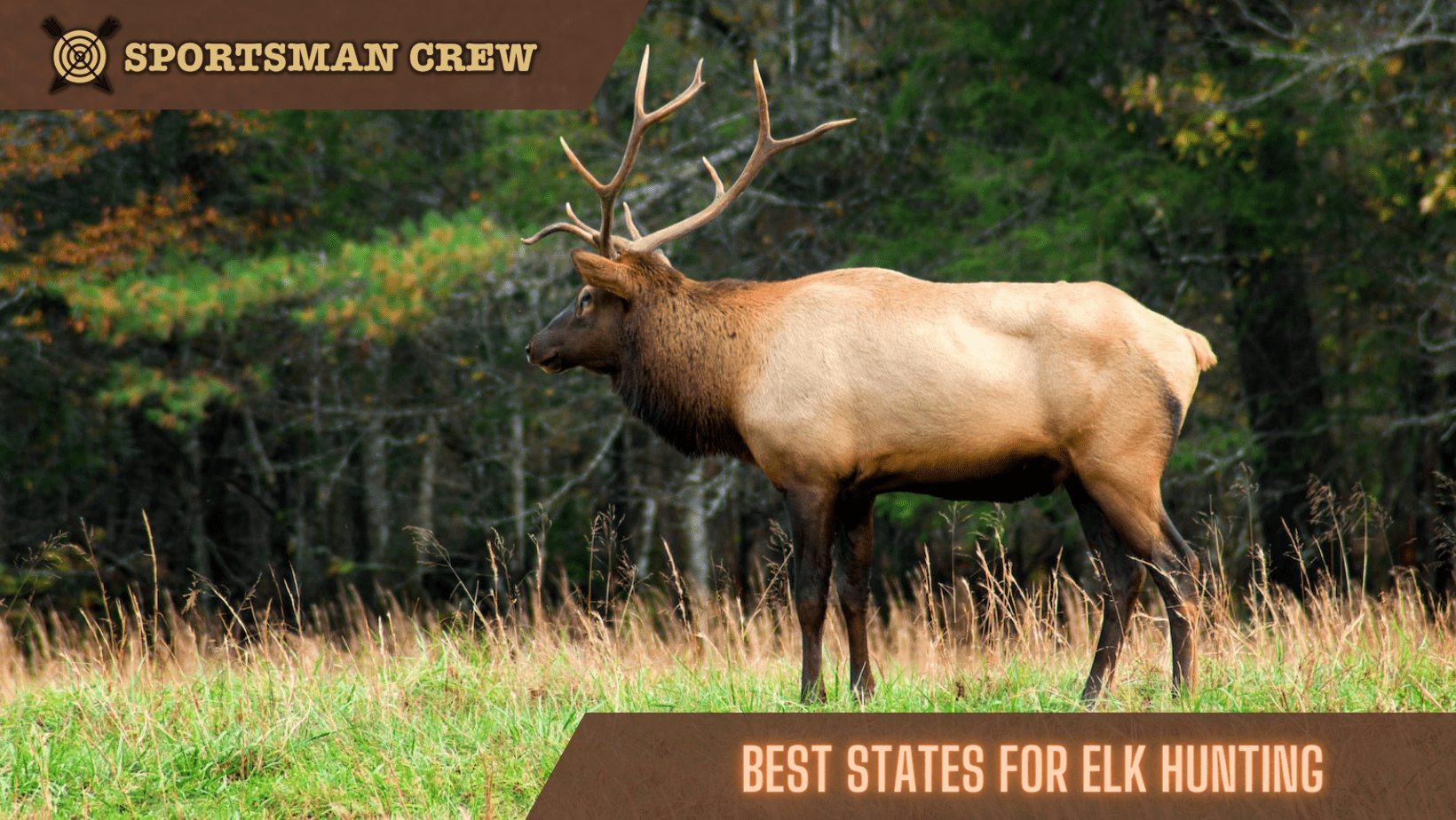Are you looking for the best states for elk hunting? We’ve put together a list of some popular elk hunting locations and why we think you should check them out if you are looking for an elk hunt.
Elk hunting is an exciting and challenging activity that not only tests the skills of the hunter but also provides an incredible opportunity to be among nature. If you’re looking for the best states for elk hunting, you’ve come to the right place. Whether a novice elk hunter or an experienced veteran, you’ll find the perfect destination for your next elk hunting adventure.
This guide will provide information on the best states for elk hunting in terms of population, terrain, laws, and regulations. We’ll also share helpful tips and tricks for finding the best spots for elk hunting and the best gear to bring along. With the right knowledge and preparation, you’ll be ready to take on the great outdoors and have an unforgettable experience.
Table of Contents
1. Montana
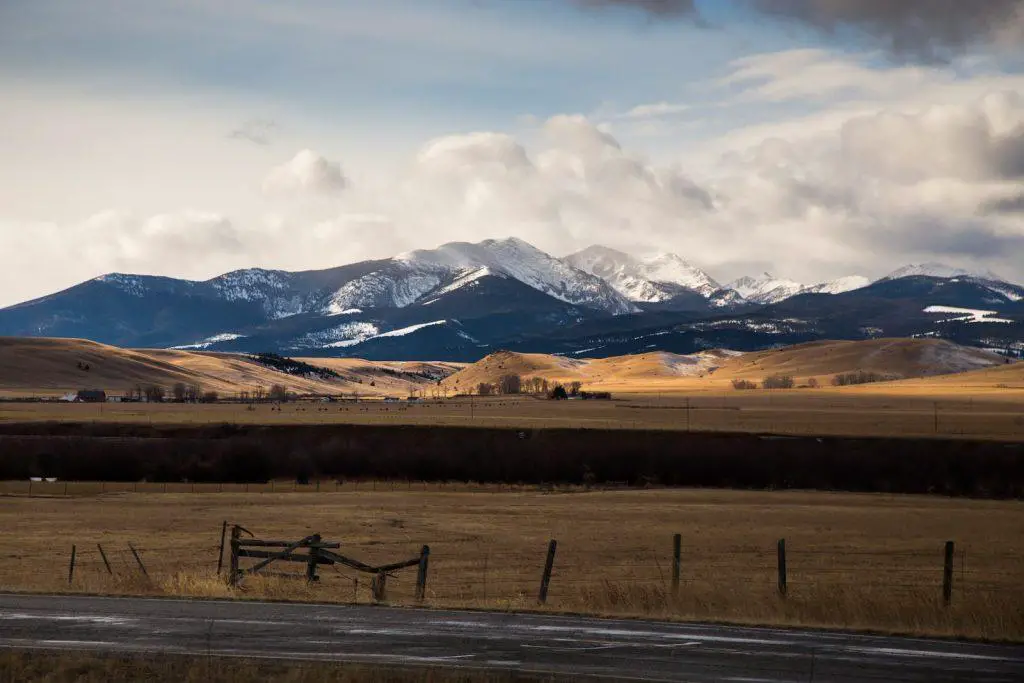
Montana is a popular destination for elk hunters due to its vast tracts of public land, abundant elk herds, and great access to outdoor activities. The state boasts some of the best elk hunting in the country, featuring a wide variety of terrain and habitat types. From rolling hills to thick forests, there is something for every elk hunter in Montana.
The state is also home to an excellent elk management program that ensures healthy elk populations, allowing hunters to take part in a successful and sustainable elk hunt. In addition, Montana offers a variety of hunting opportunities, from do-it-yourself hunts to guided trips with experienced professionals.
With plenty of public and private land to choose from, Montana is an ideal destination for elk hunting. Whether you’re looking for a challenging hunt or a more relaxed experience, you can find it in Montana.
Can Out-of-state Hunters Hunt Elk in Montana?
Yes, out-of-state hunters can hunt elk in Montana. All elk hunters in Montana must hold a valid elk hunting license and either an Elk A or Elk B. These permits are available for purchase from the Montana Department of Fish, Wildlife and Parks. Additionally, out-of-state hunters must comply with all state regulations and restrictions pertaining to hunting elk in Montana.
Does Montana Have Public Hunting Land?
Yes, Montana does have public hunting land. The state’s Department of Fish, Wildlife, and Parks (FWP) manages more than 5 million acres of land throughout the state for public hunting. This includes state parks, wildlife management areas, and other designated hunting grounds.
What is the best time of year to go elk hunting in Montana?
The best time of year to go elk hunting in Montana depends on a variety of factors, including the type of elk you are pursuing and the particular region of the state you plan to hunt. Generally speaking, though, Montana’s elk hunting season starts in September and continues through November.
Are there any restrictions on the type of weapon allowed for elk hunting in Montana?
In most areas of Montana, rifles and handguns are allowed during most elk hunting seasons, with certain restrictions. Centerfire rifles are the only firearms allowed during the rifle season, while muzzleloaders are allowed during the muzzleloader season.
What are the bag limits for elk hunting in Montana?
In Montana, the bag limit for elk hunting is five elk. Of these, only one can be a bull elk, and only three can be antlerless. In addition, you will need to obtain the appropriate permits for hunting elk in the state. Depending on the individual hunting area, there may also be additional restrictions or rules that you must follow. It’s important to check with your local fish and game office before heading out to hunt.
Are any additional special permits or licenses required for elk hunting in Montana?
The Montana Department of Fish, Wildlife, and Parks (MDFWP) requires the purchase of a hunting license and an elk hunting permit specific to the area where the hunt will take place. In addition to these basic requirements, MDFWP offers additional special permits or licenses for elk hunting in Montana.
A general elk permit is available for hunters who want to hunt any elk in Montana. This permit allows hunters to hunt both elk and deer.
Is there a season for elk hunting in Montana?
Yes, elk hunting is permitted in Montana from September to December, with different seasons in different areas. The general elk season runs from the Saturday closest to September 15th to the Sunday closest to December 15th. During this period, elk may be hunted with archery and firearms. In addition, archery-only seasons are available in specific areas from August 15th to the Sunday closest to September 15th.
Are there any areas in Montana where elk hunting is prohibited?
Yes, there are areas in Montana where elk hunting is prohibited. Many of these areas are located in National Parks, Wilderness Areas, and other protected lands. In addition, elk hunting is prohibited in certain parts of Montana in order to protect the animals from overharvesting.
Some protected areas that prohibit elk hunting are the Bob Marshall Wilderness Complex, the Great Bear Wilderness, and the Cabinet Mountains Wilderness. Areas located near Yellowstone National Park also prohibit elk hunting in order to maintain the species’ population.
Additionally, Montana has implemented elk hunting restrictions in certain areas of the state due to the spread of Chronic Wasting Disease (CWD). CWD is a fatal neurological disease that primarily affects deer and elk and can be spread by hunters. In order to help protect the animals, elk hunting is prohibited in certain parts of the state where CWD has been found.
2. Wyoming
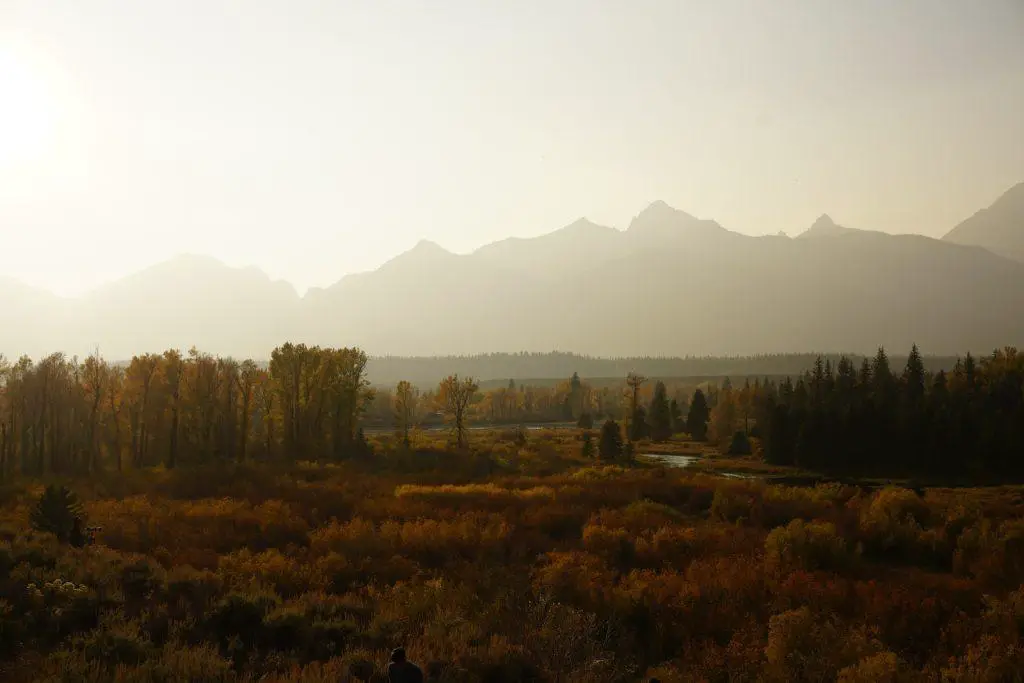
Elk hunting in Wyoming offers a unique and rewarding experience for hunters. The state’s rugged terrain provides plenty of opportunity to spot elk in their natural habitat. Additionally, Wyoming has a variety of landscapes to explore, from mountains to open plains, which can make for a great hunting experience.
Wyoming is a great place for elk hunting due to its abundant elk populations, the variety of elk hunting methods, and the opportunities available to hunters. With more than 500,000 elk in the state, Wyoming offers plenty of elk hunting opportunities, from private ranches to public hunting land.
Wyoming is also home to some of the most productive elk-hunting regions in the West, such as the Upper Green River Valley, the Shoshone National Forest, and the Medicine Bow National Forest. In addition, the state’s rugged terrain and abundant public land offer hunters a variety of hunting scenarios.
The state also offers a variety of public and private lands open for elk hunting, so there are plenty of options for finding an ideal spot. With the right gear and attitude, elk hunting in Wyoming can be an unforgettable experience.
What type of licenses do I need to hunt elk in Wyoming?
In order to hunt elk in Wyoming, you must have a valid Wyoming hunting license and an elk license. The license requirements may vary depending on the season and the type of elk hunt taking place. For general elk hunting in Wyoming, you will need a resident or non-resident Wyoming hunting license, a general elk license, and any additional permits or tags that may be required by the area you are hunting in. See the Wyoming Game & Fish Department for more information.
When is the best time of year to hunt elk in Wyoming?
The best time of year to hunt elk in Wyoming is typically in the fall. The elk rut is usually from late September to mid-October, which is the prime time to hunt elk. Hunting during this time will give you the best chance of bagging an elk due to the increased activity of the animals. The peak of the rut is the best time to hunt for trophy elk with the largest racks.
What are the bag limits and regulations for elk hunting in Wyoming?
The bag limits and regulations for elk hunting in Wyoming vary depending on the season and the location. In general, hunters may take six elk during the archery or rifle seasons, and the possession limit is twelve.
The elk must be taken from designated elk hunting areas, and hunters must possess the appropriate valid license and tag for the season. Archery hunters are allowed to take one antlerless elk in most areas, and rifle hunters may take up to four antlerless elk in certain areas.
Does Wyoming Have Public Hunting Land?
Yes, Wyoming does have public hunting land. The state is home to a variety of wildlife, including elk, mule deer, pronghorn antelope, bighorn sheep, and moose. Public hunting land in Wyoming is accessible to all hunters, regardless of whether they have a Wyoming hunting license. The Department of Game and Fish manages hunting land in Wyoming. It is divided into several categories: state and federal lands, private land leased for hunting, and tribal lands.
What type of terrain should I expect while hunting elk in Wyoming?
In Wyoming, elk can be found in a wide range of terrain. Depending on the season and the area you are hunting, you should expect to encounter mountainous forests, rolling hills, meadows, and even open deserts. The terrain is typically rugged, with plenty of trees, rocks, and uneven ground. Mountains are common and can range from gently rolling hills to steep, rocky peaks.
Depending on the area you are in, you may also encounter rivers and streams. In the spring and summer months, elk range widely and can be found in all sorts of terrain, so you should be prepared for a variety of conditions. During the fall, elk tend to be concentrated in more open areas, such as meadows and forest openings, so you should expect to encounter more open terrain.
3. Colorado
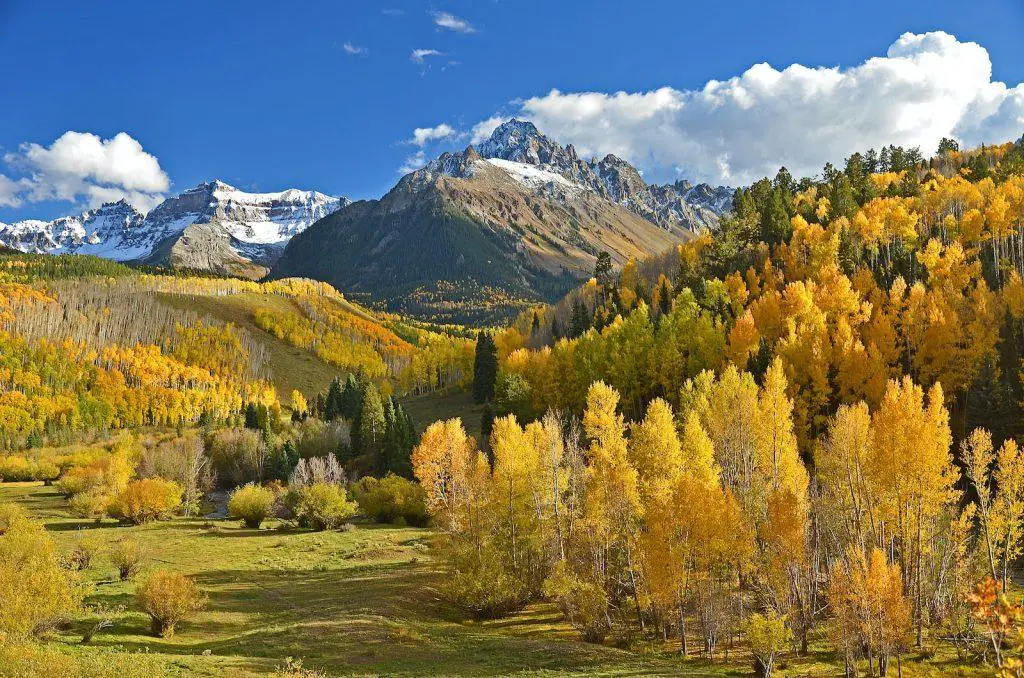
Colorado is well-known for its diverse landscapes, making it a great place to hunt elk. From the Rocky Mountains in the west to the high plains in the east, there is a variety of terrain to explore. The state’s high elevation and diverse geography provide elk with plenty of habitat and forage, making for excellent hunting opportunities.
The state offers access to public and private lands, allowing hunters to experience elk hunting in all its glory. From the rolling meadows of the foothills to the rugged peaks of the high country, there is an abundance of elk to pursue. Thanks to the state’s mild climate and plentiful public land, Colorado is a great place to elk hunt.
What type of license do I need in order to hunt elk in Colorado?
In order to hunt elk in Colorado, you will need a valid Colorado hunting license. Depending on the type of elk hunting you plan to do, you may also need additional permits or stamps. If you plan to hunt either bull or cow elk during the regular rifle or muzzleloader season, you will need to purchase a small game license, as well as a habitat stamp and an elk license. If you plan to hunt during the archery season, you will need to purchase an archery license in addition to the small game license and habitat stamp.
If you plan to hunt elk during the limited draw season, you will need to apply for a limited draw license in addition to the small game license and habitat stamp. If you are successful in the draw, you will then need to purchase the appropriate elk license. Finally, if you plan to hunt elk on private land, you may need to purchase a private land/public land combo license in addition to the small game license, habitat stamp, and elk license.
It is important to note that all hunters must complete a hunter safety course prior to being able to purchase a hunting license in Colorado. Additionally, all hunters must abide by the hunting regulations set forth by the Colorado Parks and Wildlife in order to ensure the safety of elk and other wildlife in the area.
Does Colorado Have Public Elk Hunting Land?
Yes, Colorado does have public elk hunting land. The state is home to over 500,000 elk, and approximately 7% of the total elk population in the United States. Colorado offers a variety of elk hunting opportunities on public lands, including National Forests, Bureau of Land Management (BLM) areas, state parks and Wildlife Management Areas (WMAs).
What is the best time of year to hunt elk in Colorado?
The best time of year to hunt elk in Colorado is during the fall, typically from September through November. The elk rut, or mating season, typically begins in September and continues through October and is the best time to hunt elk in Colorado. During this time, elk are active and more easily spotted and pursued.
What type of habitat is ideal for hunting elk in Colorado?
Ideal elk habitat in Colorado will vary depending on the region, but typically, areas with diverse cover and terrain are best. This means that forests, grasslands, and open meadows are ideal. Rocky outcroppings, water sources, areas of thick vegetation, and plenty of dense cover in the form of trees or shrubs are also important. Additionally, elk require plenty of space to roam, so ensuring that the area has a low human population density is key.
What type of weapons are allowed for hunting elk in Colorado?
In Colorado, elk hunting is generally allowed using firearms, muzzleloaders, and archery equipment. For firearms, rifles and handguns in any caliber are allowed, provided they are factory-made and are in compliance with the state’s regulations. Shotguns using slugs or sabots are also allowed. Muzzleloaders must use a minimum of .40 caliber with a minimum powder charge of 65 grains.
For archery equipment, all bows are allowed, including crossbows. Broadheads must have at least two cutting edges and be at least 7/8 inches wide. In addition, using air guns, air blow, and crossbows with mechanical triggers are prohibited. It is important to note that each area may have different regulations and restrictions on the types of weapons allowed for hunting elk. Check with the applicable state and local regulations before heading out for your hunt.
4. Idaho
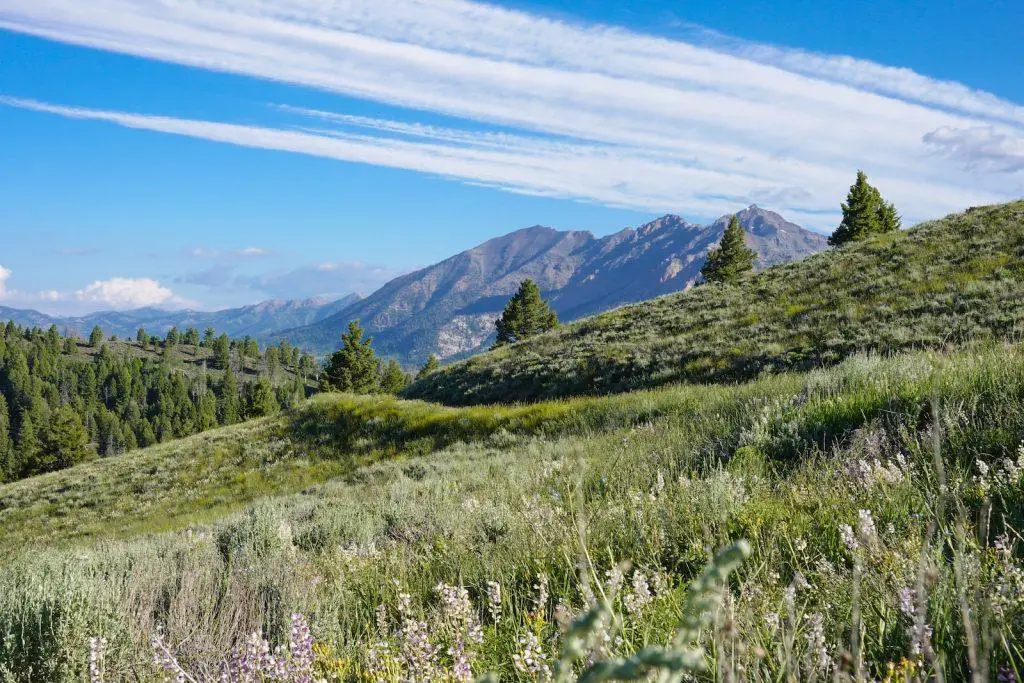
Elk hunting in Idaho is an excellent way to experience the outdoors. The state’s expansive forests, rugged terrain, and plentiful wildlife provide an ideal environment for elk hunting. The challenging terrain and vast open spaces make for an exciting and rewarding hunting experience. Idaho also offers a wide variety of hunting opportunities, from general rifle and archery hunts to backpack hunts and even special hunts for youth and disabled hunters. With over 2 million acres of public land, the Gem State is a great place to seek out elk.
Additionally, the diversity of the landscape, which includes mountains, foothills, and high deserts, allows hunters to seek out a variety of habitats, ensuring they can find the perfect spot for their hunt. Whether you’re an experienced elk hunter or looking to try out elk hunting for the first time, Idaho is the place to be.
What license do I need to hunt elk in Idaho?
In Idaho, a valid hunting license is required to hunt elk. To purchase a hunting license, you must be 10 years of age or older, and the license must be obtained prior to the start of the hunting season. You may purchase an elk tag and hunting license from the Idaho Fish and Game Department. All hunters must have a hunter education certificate if born on or after January 1, 1975. A hunter may purchase up to three elk tags, but only one elk may be taken per tag. All tag and license fees are non-refundable.
Does Idaho have public land for elk hunts?
Yes, Idaho does have public land for elk hunts. Most elk hunting opportunities in Idaho take place on public land, managed by the Idaho Department of Fish and Game (IDFG). The state has over 20 million acres of public land, including National Forests and Wilderness Areas, BLM and USFS land, and state wildlife management areas.
The best way to find public land for elk hunting in Idaho is to consult the IDFG website, which lists all of the state’s hunting areas, along with regulations and other important information. The website also provides maps showing the boundaries of the various public lands, along with the type of game animals found in each area.
What type of terrain should I expect while elk hunting in Idaho?
When elk hunting in Idaho, you can expect to encounter a variety of terrain, ranging from open meadows to dense forests. The terrain can also vary greatly depending on which region of the state you are hunting in. You’ll find rolling hills, high mountains, open forests, and deep valleys in most parts of Idaho. The mountains will likely be covered in coniferous trees and may have meadows and clearings. In the valleys, you’ll find more open terrain with plenty of grass and shrubs and some trees. Hunting in higher elevations can be more challenging due to the steepness of the terrain and the harsh conditions.
How long is the elk hunting season in Idaho?
In Idaho, elk hunting season typically runs from August 30th through December 1st, although the exact dates vary each year slightly. The general season typically opens on the first Saturday of October and runs through the last Sunday of November. In some areas of Idaho, elk hunting may also be allowed in December and January. Additionally, some areas may have specific regulations regarding elk hunting. It is important for hunters to check with their local fish and game office for more details.
What areas of Idaho are the best for elk hunting?
The Selway Bitterroot Wilderness, Clearwater National Forest, and Nez Perce National Forest offer excellent elk hunting in the north. These areas are plentiful with elk and offer some of the best elk hunting in the country. The Frank Church River of No Return Wilderness and the Salmon-Challis National Forest offer excellent elk hunting in central Idaho. These areas are known for their larger elk herds and offer some of the best elk hunting in the state.
The Owyhee Mountains, Bruneau Desert, and Snake River Canyon offer excellent elk hunting in the south. These areas are known for their big bulls and offer some of the best elk hunting in the state. Idaho is home to some of the best elk hunting in the country, with excellent opportunities in the north, central, and southern parts of the state. Experienced hunters can find some of the biggest bulls in the state, and all types of hunters can find good opportunities in Idaho.
What weapons are allowed for elk hunting in Idaho?
In Idaho, the following weapons are allowed for elk hunting: Shotguns, with a minimum barrel length of 18 inches and a maximum of 3 shells loaded at a time. Muzzleloaders, with a minimum caliber of .40. Archery equipment, including a longbow, recurve bow, or compound bow with an arrowhead that has a minimum of 7/8-inch cutting surface. Centerfire rifles, with a minimum caliber of .24. Air guns, with a minimum caliber of .20. Black powder handguns, with a minimum caliber of .40. Slugs and sabots for shotguns, with a minimum caliber of .24. Handguns, with a minimum caliber of .24. Crossbows, with a minimum draw weight of 125 pounds.
Are there any restrictions on the number of elk that can be taken while hunting in Idaho?
In Idaho, the limit on elk is determined by the Idaho Department of Fish and Game. Depending on the area, harvest limits for elk can range from one to four animals per hunter. In some areas, an additional antlerless elk may also be taken. The bag limit also varies depending on the season and the type of tag purchased.
For example, certain tags may allow up to three elk to be taken during a single season. In addition, hunters can only take a certain number of elk in certain areas. For example, the limit in some areas may be two bulls, two cows, or one of each. All elk species are protected in Idaho, so hunters must check the regulations before hunting in any area.
5. Oregon
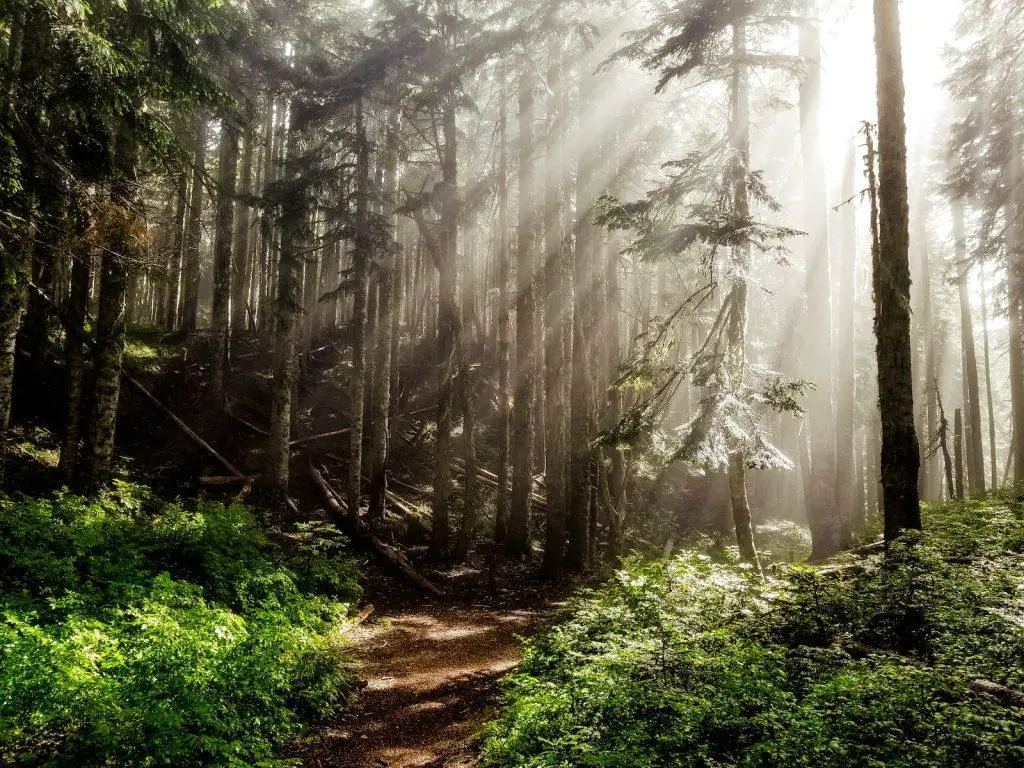
Oregon is an outdoor enthusiast’s paradise with its diverse and rugged terrain, abundant wildlife, and plentiful public land. Elk are one of Oregon’s most sought-after game animals, and the state provides plenty of opportunities to hunt them. Oregon’s wide and varied topography offers plenty of elk hunting opportunities. From the windswept coastal bluffs to the dense forests of the Cascade Mountains, Oregon offers a wide variety of elk and other wildlife habitats. Many of these areas are open to public hunting and offer excellent opportunities for successful elk hunts.
Oregon’s abundant wildlife also makes it an ideal destination for elk hunters. The state is home to a large population of elk, and it is not uncommon to find herds numbering in the hundreds. Oregon also offers a variety of other big game species for hunters, including black-tailed deer, mule deer, Rocky Mountain elk, and pronghorn antelope.
In addition to its diverse terrain and abundant wildlife, Oregon also provides plenty of public land for elk hunters. The state is home to more than two million acres of public land, including national forests, state forests, and Bureau of Land Management (BLM) lands. These public lands provide ample opportunities for successful elk hunts.
For elk hunters, Oregon is an ideal destination. The state offers diverse and rugged terrain, abundant wildlife, and plenty of public land for hunting. Whether you are a first-time elk hunter or a seasoned veteran, Oregon offers something for everyone.
What license is required to hunt elk in Oregon?
In Oregon, all hunters must have a valid hunting license in order to hunt elk. Depending on the type of hunting, the license may vary. For example, an Oregon resident may purchase a resident general hunting license, while a non-resident may purchase a non-resident general hunting license. Both types of licenses allow the hunter to hunt elk and other game in Oregon.
In addition, some specific elk hunting tags may be required to hunt elk in Oregon. These tags are limited and typically require an application and additional fees. Depending on the type of hunt and the region, tags may be available for either-sex elk, cow elk, or bull elk.
Finally, hunters must comply with all state regulations, including local tag limits and closed seasons. It is important to check the Oregon Department of Fish and Wildlife website for the most up-to-date regulations before hunting elk in Oregon.
Does Oregon have public elk hunting land?
Yes, Oregon does have public elk hunting land. The Oregon Department of Fish and Wildlife (ODFW) manages elk hunting on public lands throughout the state. Public lands include state forests, wildlife management areas, and other public lands managed by the ODFW.
What are the elk hunting seasons in Oregon?
In Oregon, elk hunting season varies by region and species. Generally, the seasons begin in August and end in December.
For Rocky Mountain elk, the archery season typically runs from late August to early September. The rifle season runs from late October to early November. For Roosevelt elk, the archery season typically runs from late August to early November. The rifle season runs from late October to early December.
For both species, there are also late-season hunts, which typically run from December to late December. Hunters must have the appropriate permits and tags for the region and species they plan to hunt.
In addition, the Oregon Department of Fish and Wildlife has established special regulations for elk hunting in certain areas. For example, there are no elk hunting opportunities in certain wildlife management units in the Cascade Mountains.
What types of elk hunting are allowed in Oregon?
In Oregon, elk hunting is allowed in a variety of ways. Hunters can hunt in the general season, which typically runs from late August to late October, as well as in special controlled hunts. Hunters can also use archery and muzzleloader equipment and hunt with hounds.
In addition, Oregon also offers special elk hunt tags, which allow hunters to hunt for a shorter period of time. These tags are typically available in the spring and allow hunters to hunt during the elk’s rut season. Hunters can also use these tags to hunt in areas that may not be available during the general season.
Finally, Oregon also allows hunters to hunt elk on private land through an Outfitter Hunting Permit. This permit allows hunters to hunt on private land with the permission of the landowner. However, it is important to note that any elk killed on private land must be taken to a state-approved check station for inspection and tagging.
What is the bag limit on elk in Oregon?
Oregon’s bag limit on elk is generally one elk per season per hunter. However, depending on the zone, this can vary. This is determined by the Oregon Department of Fish and Wildlife and is based on the current population of elk in the area. The bag limit for some zones is more restrictive than others, and some areas do not allow the hunting of elk at all.
What are the best places to elk hunt in Oregon?
Oregon has a wide variety of terrain and topography, making it one of the best states in the US for elk hunting. The state is home to some of the biggest bull elk in the country and has an abundance of public land for hunters to access.
The Cascade Mountains of Western Oregon are a great place to start when looking for elk. The area offers a variety of terrain, including high-elevation alpine meadows, steep slopes, and dense timber. The Willamette National Forest has a large population of elk, and hunting is allowed in the forest for certain parts of the year. The Umpqua and Deschutes National Forests are also great hunting spots.
Eastern Oregon has some of the best elk hunting in the state. The state’s largest elk herd is in the Blue Mountains and Ochoco National Forest. These areas have a variety of terrain, and hunting can be very successful during the late season. The Wallowa Mountains of Northeast Oregon also have a healthy population of elk and great hunting opportunities.
Finally, the Coast Range of Oregon has plenty of elk and can be a great place to hunt during the early season. The Siuslaw National Forest has some of the best elk hunting in the state and numerous other wildlife species.
6. Washington
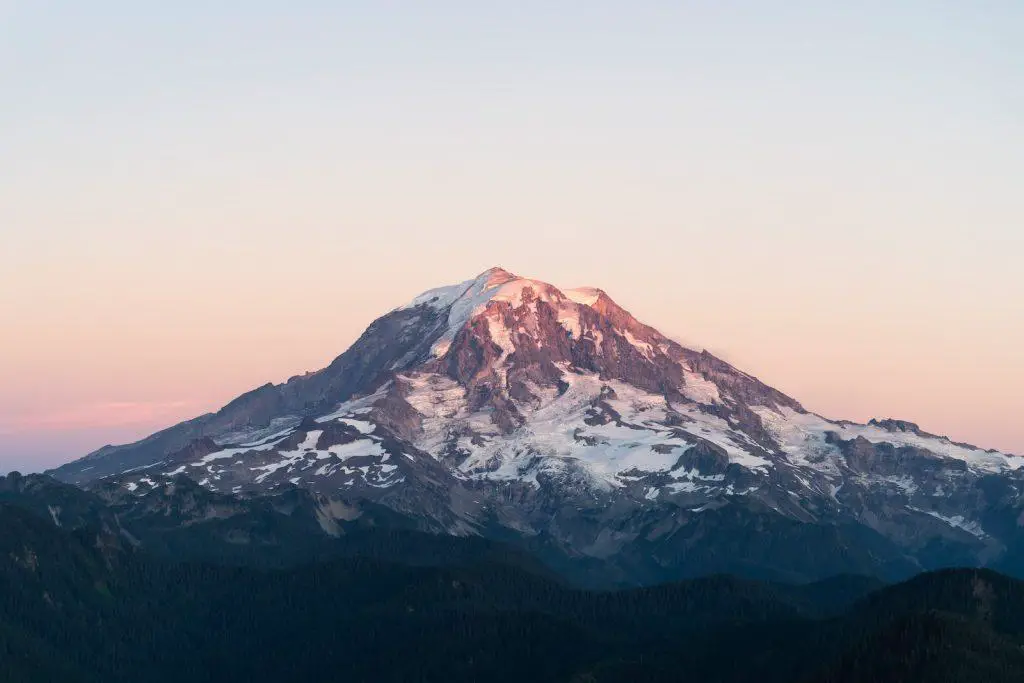
Washington is a great destination for elk hunters looking to pursue their passion. With its diverse terrain, abundant wildlife, and wide-open spaces, Washington offers an unforgettable elk-hunting experience.
Washington is home to two different types of elk: Roosevelt elk and Rocky Mountain elk. These two species of elk can be found throughout the state, particularly in the eastern part of Washington and the Cascade Mountains. For the Roosevelt elk, the best times to hunt are during the late summer and early fall, when they are the most abundant. On the other hand, the Rocky Mountain elk are best hunted during the early fall and late winter months.
One of the best things about elk hunting in Washington is the sheer number of public lands available. National forests and state lands are available for hunters, offering a variety of terrain and options for hunting. In addition, there are also several private elk ranches that allow for elk hunting on their property.
Washington also offers many great spots for elk hunters to stay. There are a variety of campgrounds, lodges, and cabins available for hunters, offering an ideal place to rest and recuperate after a long day of hunting. There are also a number of outfitters and guides that can help you plan a successful elk hunting trip.
What license is needed to hunt elk in Washington?
In Washington, an elk hunting license is required to hunt elk. The Washington Department of Fish and Wildlife (WDFW) can purchase the license. A valid resident, non-resident, or youth hunting license must be purchased for a hunter to hunt elk in Washington, and a valid elk tag must be purchased in addition to the hunting license.
Does Washington have public elk hunting land?
Yes, Washington does have public elk hunting land. The Washington Department of Fish and Wildlife (WDFW) manages over 1.1 million acres of public lands across the state for hunting, fishing, and other outdoor activities. These public lands provide access to elk hunting opportunities in Washington.
The majority of elk hunting in Washington takes place on WDFW lands, such as wildlife areas, state parks, and recreation areas. Elk hunting is also allowed on other public lands, including Bureau of Land Management (BLM) lands, US Forest Service (USFS) lands, and tribal lands. You must obtain permission from the appropriate agency to hunt on these public lands.
What are the bag limits for elk hunting in Washington?
The bag limit for elk hunting in Washington is determined by the Washington Department of Fish and Wildlife (WDFW). It is based on the size of the elk herd and the number of elk hunters in the state. Generally, the bag limit is one elk per hunter per season. Some areas may have a two-elk bag limit if the elk herd is abundant.
In some areas, hunters may take two elk if accompanied by another licensed hunter. Hunters may take extra bulls in certain units if the elk herd is abundant in that area. In some areas, hunters may be able to take an additional elk if they are part of an organized hunting party.
In addition to the bag limit, hunters must also abide by other regulations, such as restricted hunting methods and seasons, as well as limits on the number of days they can hunt. The WDFW also has specific regulations for antlerless elk, and hunters should read up on these before hunting.
What is the best time of year for elk hunting in Washington?
The best time of year for elk hunting in Washington is typically the fall season, which runs from late September to early November. During this time, elk are in their peak rutting season and are more active and visible in the woods. This time of year also offers hunters the best chances of success, as elk are more likely to respond to calling and other attractant techniques. Additionally, the cooler temperatures make it more comfortable for hunters to remain in the woods for long periods of time.
What are the best hunting locations for elk in Washington?
Washington is home to some of the best elk hunting in the United States. The state offers many different locations to hunt elk, ranging from the high country of the Cascade Mountains to the grasslands of the Columbia Basin. Here are some of the best elk hunting locations in Washington:
- Clearwater Wildlife Management Area – This area features over 11,000 acres of prime elk hunting terrain. The area is broken up into four hunting units, each offering unique opportunities for elk hunting.
- Wenatchee National Forest – This vast forest in the North Cascades is home to some of the best elk hunting in Washington. The area is full of meadows, old growth forests, and plenty of elk.
- Okanogan-Wenatchee National Forest – This huge wilderness area is home to some of the best elk hunting in Washington. The area has a variety of terrain, from high mountains to open meadows and forests.
- Mt. Adams Wilderness – This area is full of meadows, forests, and plenty of elk. Elk herds can be found in the higher elevations, while the lower elevations offer excellent elk hunting opportunities in the meadows.
- Olympic National Park – This vast park offers plenty of elk hunting opportunities. The area has rugged terrain
Are there special regulations for elk hunting in Washington?
Yes, there are special regulations for elk hunting in Washington. All elk hunters in Washington must have a valid elk tag in order to hunt elk legally. Elk tags may be obtained from the Washington Department of Fish and Wildlife (WDFW). Additionally, hunters must follow all state hunting regulations, including local hunting closure areas, bag limits, and seasons.
Are there restrictions on the type of weapon used when hunting elk in Washington?
Yes, there are restrictions on the type of weapon that can be used when hunting elk in Washington. In general, hunting elk with a rifle is allowed in most areas of the state, but some areas may require the use of archery equipment, shotguns with slugs, or muzzleloaders. Furthermore, certain weapon types are prohibited in certain areas. For example, hunting elk with a full-auto firearm is not allowed anywhere in the state.
In addition to the type of weapon, hunters must also be aware of the regulations regarding the caliber of the firearm that can be used. Generally, firearms used for elk hunting in Washington must be at least .24 caliber or larger.
7. Utah
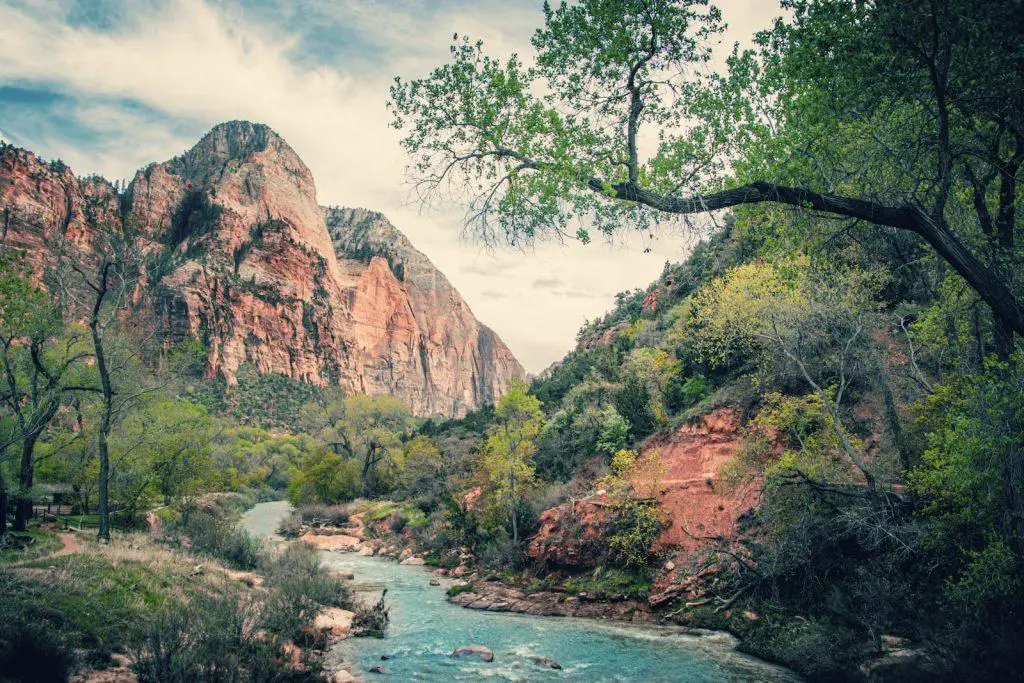
Utah is renowned for its excellent elk hunting opportunities. With millions of acres of public and private land available, Utah provides hunters with a variety of terrain and habitats to explore and search for elk. Elk in Utah are abundant, and the state boasts some of the largest bull elk in the country.
The state also offers a variety of wildlife management areas and national parks and forests, which provide a wide range of terrain and habitat for elk. Hunting in Utah is made easier by the state’s well-managed and plentiful elk population, and there are plenty of opportunities to find success.
What license is needed to hunt elk in Utah?
In order to hunt elk in Utah, individuals need to possess a valid hunting license from the Utah Division of Wildlife Resources. Licenses can be purchased online or from an authorized license agent. A valid hunting license is required for both resident and nonresident hunters in order to hunt any big game animal, including elk.
In addition to a valid hunting license, individuals must possess the necessary permits and tags to hunt elk in Utah. Each hunter must obtain a special permit to hunt elk in Utah, which can be purchased online or from authorized license agents. Depending on the type of elk hunt, hunters may also need to purchase additional permits, such as a big game draw permit or a general season bull elk permit.
Does Utah have public elk hunting land?
Yes, Utah does have public elk hunting land, including state and national forests, Bureau of Land Management (BLM) land, and other public lands. The state of Utah manages millions of acres of public lands, including national forests, BLM land, state parks, and other publicly-owned lands. While the majority of public lands in Utah are open to recreational activities such as hiking, camping, and fishing, some are open to hunting.
What areas of Utah offer the best elk hunting?
Utah is home to some of the best elk hunting in the country. The state’s vast backcountry offers a wide variety of terrain and habitats that are perfect for elk hunting. Utah’s best areas for elk hunting include the Uinta Mountains, the Wasatch Mountains, and the Book Cliffs.
The Uinta Mountains are located in northeastern Utah and are home to a large population of elk. The high elevation and rugged terrain make it an ideal spot for elk hunting. The Wasatch Mountains are located in northern Utah and provide excellent habitat for elk. The open meadows and rolling hills make it an ideal spot for spotting elk. Finally, the Book Cliffs in eastern Utah are home to some of the best elk hunting in the state. The rocky terrain and deep canyons provide excellent cover for elk.
What types of firearms are allowed for elk hunting in Utah?
In Utah, hunters are allowed to use a variety of firearms to hunt elk, including shotguns, muzzleloaders, handguns, and rifles. Shotguns must be loaded with slugs only and have a minimum barrel length of 18 inches. Muzzleloaders must be .45 caliber or larger and must use black powder or an approved substitute. Handguns must be either .357 caliber or larger and have a minimum barrel length of 4 inches. Rifles must have a minimum barrel length of 16 inches and be .24 caliber or larger. All firearms must be in good working condition and comply with all state and federal regulations. Hunters may also use archery equipment to hunt elk in Utah.
What is the elk bag limit in Utah?
In Utah, the elk bag limit varies depending on the region, season, and the hunter’s type of license. The bag limit for elk in Utah is three elk per person per year. However, additional restrictions may apply, such as the number of elk taken in specific areas or the number of elk taken by hunters with a special permit.
The Utah Division of Wildlife Resources (DWR) regulates the hunting season in Utah and sets the bag limits for elk. To find the bag limit for elk in your area, check the DWR website for information about the current hunting regulations for elk. It is important to remember that these regulations may change each year, so it is important to stay informed about the latest rules and regulations.
In some areas, there may also be restrictions on the number of cows, bulls, or calves that can be taken during a hunting season. In addition, some areas may have an antler point restriction. This means hunters must only take elk with antlers of a certain length or with a certain number of antler points.
8. New Mexico
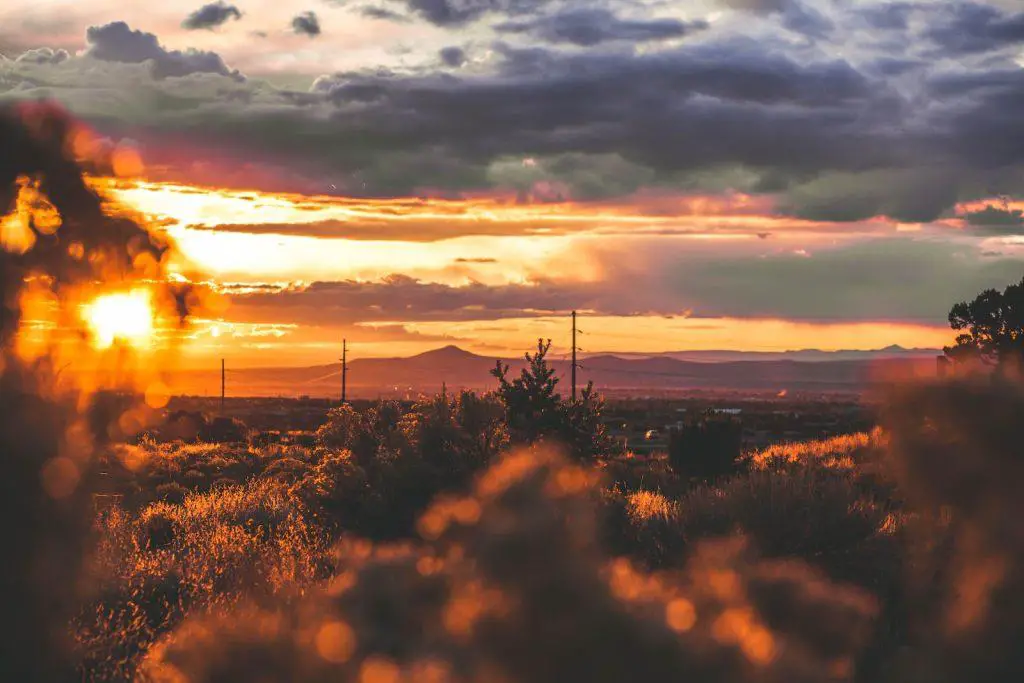
Elk hunting in New Mexico is an exciting and rewarding experience for outdoorsmen and women. With vast open spaces, diverse terrain, and an abundant population of elk, the Land of Enchantment has become a premier destination for elk hunters worldwide.
New Mexico’s mild climate plays a major role in sustaining a healthy and thriving elk population. . This variety of habitats allows elk to spread out, increasing their chances of finding food, shelter, and mates. Elk can be found in the state’s mountain ranges and forests, including the San Juan Mountains, Jemez Mountains, Gila National Forest, and Lincoln National Forest. There are also several elk herds in the state’s ranchlands.
The state also offers excellent opportunities for bow and rifle elk hunting. Depending on the season, hunters can choose from a variety of draw hunts, public land hunts, and private land hunts. Bow hunters typically prefer to hunt during the rut, while rifle hunters prefer the early season.
In addition to the fantastic elk hunting opportunities, New Mexico also offers some of the most stunning scenery in the United States. From the majestic sandstone cliffs in the Chihuahuan Desert to the snow-capped peaks of the Sangre de Cristo Mountains, New Mexico has something for everyone.
Whether you’re a veteran elk hunter or just getting started, New Mexico is the perfect place to experience the thrill of the hunt. With its beautiful landscapes, diverse habitats, and abundant population of elk, the New Mexico is sure to provide an unforgettable experience.
What license do you need to hunt elk in New Mexico?
In order to legally hunt elk in New Mexico, an individual must possess both a hunting license and a big game license. A hunting license will allow a hunter to pursue all species of small game, migratory game birds, and furbearers. A big game license will then be necessary in order to hunt elk and other big game species such as deer, antelope, and pronghorn.
In order to obtain a hunting license, an individual must be 12 years old or older and must have proof of a hunter education course completion or an exemption from the hunter education course. See the New Mexico Game and Fish website for more details.
Does New Mexico have public elk hunting land?
Yes, New Mexico does have public elk hunting land. New Mexico has a large amount of public land available for hunting, including elk hunting. The Bureau of Land Management, the U.S. Forest Service, and the New Mexico Department of Game and Fish manages these lands.
The New Mexico Department of Game and Fish manages over 1.8 million acres of public land for hunting and fishing. These lands are open for public hunting, including elk hunting. The Department of Game and Fish also offers a variety of special hunt-related programs, such as youth hunts, special draw hunts, and mentored hunts.
What seasons are open for elk hunting in New Mexico?
A1: The elk hunting season in New Mexico typically runs from late August to late November, with separate archery and rifle seasons.
What is the bag limit for elk in New Mexico?
In New Mexico, elk hunting is open in all four seasons. Hunting is allowed in the spring, summer, fall, and winter. The spring season usually runs from mid-April to mid-May and is a great time to hunt elk. This season is popular because the animals are in the rut, meaning they are more active and easier to spot.
The summer season runs from mid-June to late August and is also a great time to hunt elk. The summer months provide good weather and plenty of vegetation for the elk to feed on, making them easier to find.
The fall season runs from early September to late November and is the most popular time of year to hunt elk. This season is the peak of the rut, and the elk are more active and easier to find.
The winter season runs from mid-December to mid-March and can be a great time to hunt elk. Although the weather can be cold, the snow can provide good visibility and make spotting elk easier. Additionally, the elk are often in herds during this time, making them easier to locate.
What is the best time of day to hunt elk in New Mexico?
The best time of day to hunt elk in New Mexico is in the early morning hours. Elk tend to be most active in the early morning hours when they are searching for food. In addition, the cooler temperatures in the early morning can help the hunter remain undetected. Elk are most active during the rut in the fall, so the best time to hunt them during this season is typically when the sun rises, and the light is low. It is important for hunters to keep in mind that elk can also be active in the late evening and early night. However, due to decreased visibility at night, hunting elk is generally not recommended during these hours.
What habitat should I look for when elk hunting in New Mexico?
The best places to hunt elk in New Mexico include the Valles Caldera National Preserve, the Gila Wilderness, and the San Juan National Forest. These areas provide a variety of habitats that elk use for foraging and shelter. In addition to open grasslands, these areas feature meadows, aspen stands, and conifer forests.
9. Arizona
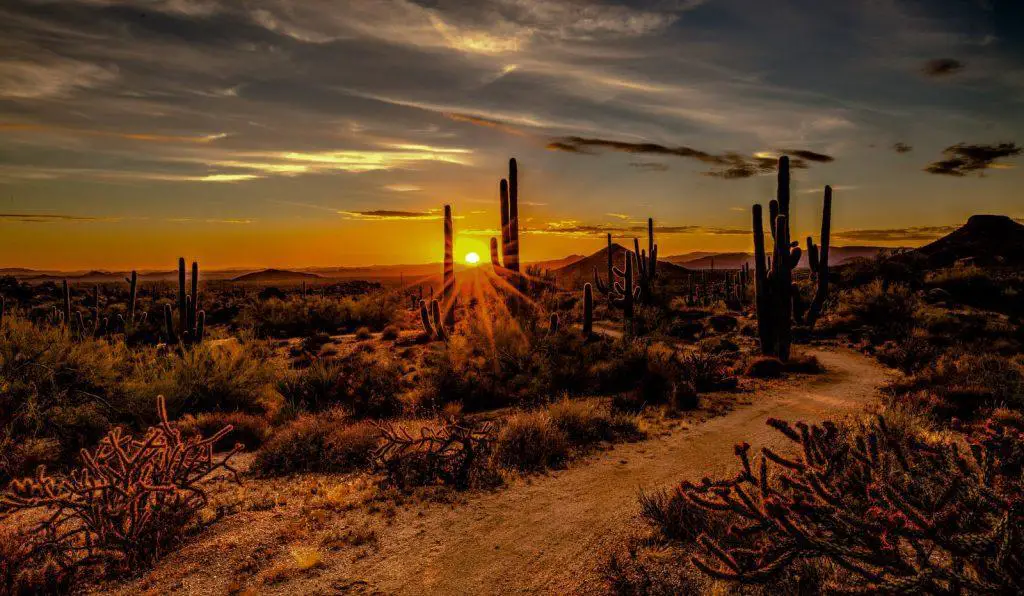
Located in the American Southwest, Arizona provides a wide variety of habitats for elk, from desert grasslands and pinyon-juniper woodlands to ponderosa pine forests and alpine meadows. It also has some of the most liberal elk hunting seasons in the United States, with general rifle seasons that can last for weeks and have liberal bag limits.
Arizona’s elk population is estimated to be around 115,000 animals, making it one of the top states for elk hunting. The state also offers a wide variety of opportunities for elk hunters, from backcountry wilderness areas to private land leases. Elk can be found in many areas of the state, so regardless of where you choose to hunt, there will be plenty of elk around.
Arizona also offers some of the most beautiful backcountry in the United States, perfect for a hunting adventure. Its stunning sunsets, rugged mountain ranges, and wide open spaces make it an ideal place to hunt elk.
If you’re looking for a great elk hunting destination, look no further than Arizona. With its abundance of elk, diverse habitats, and liberal hunting seasons, it’s the perfect place to pursue the majestic elk.
What license do you need to hunt elk in Arizona?
In order to hunt elk in Arizona, hunters must possess an Elk Stamp Endorsement and an Arizona Hunting License. The Elk Stamp Endorsement is an additional permit required to hunt elk in Arizona and can be purchased from the Arizona Game and Fish Department or an authorized license dealer.
Does Arizona have public elk hunting lands?
Yes, Arizona does have public elk hunting lands. The Arizona Game and Fish Department operates several Wildlife Management Areas (WMAs) that offer elk hunting opportunities in Arizona. These WMAs are located throughout the state and are generally open for hunting from October through March. In addition to the WMAs, the Game and Fish Department also operates several National Forests, State Trust Lands, and State Parks that offer elk hunting opportunities.
What types of elk are found in Arizona?
The elk species found in Arizona is the Rocky Mountain elk. This species is native to the high-elevation areas of the Rocky Mountains, Cascades, and northern Great Plains but has been introduced to various parts of Arizona. The state’s largest herds of Rocky Mountain elk are located in the White Mountains near the Arizona-New Mexico border. Other small populations are found in the Kaibab National Forest near Flagstaff and the Chiricahua Mountains.
What are the elk hunting seasons in Arizona?
In Arizona, the hunting season for elk generally occurs between August and January. The exact dates of the season vary from year to year and depend on the species of elk sought and the region of the state where the hunt will take place. Most elk hunting seasons begin in August or September, with the general rifle season typically lasting through the end of the year.
The early archery elk season typically runs from mid-August through late September, while the late archery elk season typically runs from early October through the end of the year. The Arizona Game and Fish Department may offer additional elk seasons in specific areas, such as the Kaibab Plateau, and offer special “hunt of opportunity” tags. The youth season is typically held in October or November.
Is there a bag limit for elk hunting in Arizona?
Yes, there is a bag limit for elk hunting in Arizona. The bag limit is two elk per hunter per year, with one of the two elk being antlered. The other elk may be either antlered or antlerless. In addition, there are restrictions on the size of the antlers, and hunters must check their elk before field-dressing the animal. Hunters must also report their harvest to the Arizona Game and Fish Department within one business day of harvesting an elk.
What type of terrain is best suited for elk hunting in Arizona?
In Arizona, elk hunting is most common in the higher elevation areas of the state, such as the Kaibab Plateau, the San Francisco Peaks, and the White Mountains. These areas typically feature higher-elevation grasslands, coniferous forests, and open meadows. These environments offer abundant food sources for elk and provide plenty of cover for hunters.
The terrain also provides a variety of opportunities for hunting, as elk can be found in dense vegetation as well as in open meadows. Additionally, these areas often feature rugged terrain with steep slopes, rocky outcroppings, and brushy canyons. This terrain is ideal for elk hunting as it provides cover and concealment while offering long-distance shots that can be taken from elevated positions.
10. South Dakota
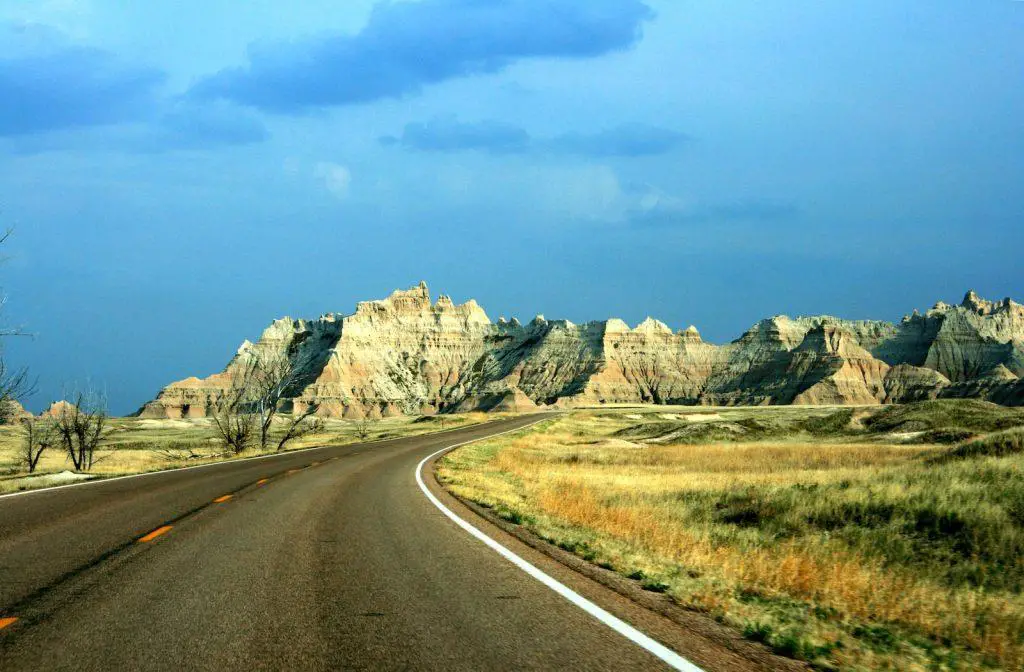
Elk hunting in South Dakota is an experience like no other. The state boasts an impressive elk population, with an estimated 6,500 animals spread across the Black Hills region. This is thanks to the state’s Elk Restoration Program, which was created in the 1950s to restore the elk population to its historical numbers.
In addition to the elk population, South Dakota also offers a variety of landscapes for hunters to explore. The state has something to offer everyone, from its rolling prairies to its rugged Black Hills. These different terrains offer hunters the opportunity to try different techniques, making the elk hunting experience even more exciting.
South Dakota also offers a variety of other activities for hunters to enjoy while in the state. Boating on the Missouri River, visiting the Crazy Horse Memorial and exploring the Wind Cave National Park are all great options for hunters looking to get the most out of their trip.
Overall, South Dakota is an excellent choice for elk hunters. With an abundance of elk and a variety of terrains, the state offers the perfect hunting experience. So the next time you’re looking for an exciting and rewarding elk hunting trip, consider heading to South Dakota.
What license is required to hunt elk in South Dakota?
In South Dakota, an individual who wishes to hunt elk must purchase an elk hunting license. This license grants the hunter permission to hunt elk in specific areas during certain times of the year and certain license types also determine the number of elk that may be harvested. In order to purchase an elk hunting license, all prospective hunters must first complete a hunter education course. This course covers basic hunting safety, regulations, and conservation practices, and all hunters must successfully pass the exam in order to purchase a license.
Does South Dakota have public elk hunting grounds?
Yes, South Dakota does have public elk hunting grounds. The South Dakota Department of Game, Fish, and Parks (GFP) manages a number of public elk hunting grounds across the state. These include the Black Hills National Forest, Custer State Park, the Fort Pierre National Grassland, and the Badlands National Park.
What areas of South Dakota are known for elk hunting?
The Black Hills region is especially popular with hunters due to the healthy population of Rocky Mountain elk native to the area. Elk thrive in the varied terrain of the Black Hills, which is made up of forested hills, deep valleys, and open prairies. The Buffalo Gap National Grassland and Fort Pierre National Grassland are also popular areas for elk hunting due to the excellent habitat found in these areas.
The Badlands National Park is another area known for elk hunting. This park is home to a healthy population of Roosevelt elk, and the terrain of the Badlands offers a unique challenge for hunters. Roosevelt elk are larger than their Rocky Mountain cousins, and due to their size, they can be a challenge to hunt.
What type of weapons are allowed for elk hunting in South Dakota?
In South Dakota, elk hunting is allowed with shotguns, handguns, muzzleloaders, and longbows. The minimum caliber for firearms is .25, and the muzzleloader must be .45 or larger. Shotguns must be limited to slugs or buckshot, and arrows must be at least 20 inches long with a broadhead with a minimum width of 7/8 inch. Additionally, it is illegal to hunt elk with any rifle or handgun capable of firing a fully automatic rate of fire. This includes semi-automatic firearms with a magazine capacity of more than five rounds and semi-automatic pistols with magazines that hold more than ten rounds. Finally, hunting elk with any explosive or chemical weapons is illegal.
What is the season for elk hunting in South Dakota?
Elk hunting in South Dakota is open during the fall and winter hunting seasons. Archery season begins on September 1st and runs through the end of December. Firearms season begins on November 15th and runs through the end of December. Muzzleloader season begins on the third Saturday of December and runs through the end of the month.
Conclusion
Elk hunting is an exciting sport that is enjoyed across the United States. From the forests of the Pacific Northwest to the rolling hills of the Midwest, there are a variety of excellent options for elk hunting. Each state offers unique elk hunting opportunities, with some states offering more public hunting land than others. The states highlighted here offer some of the country’s most diverse and abundant elk hunting opportunities. With so many great options available, elk hunters are sure to find the perfect spot to pursue their passion.
